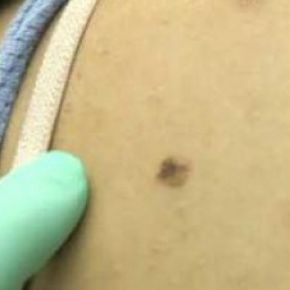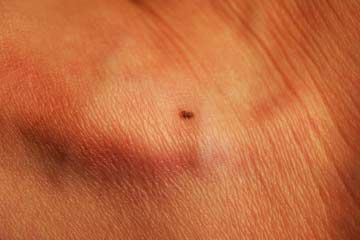Picture this — you get out of the shower, stand in front of the mirror and notice a suspicious mark on your skin. At first, you think it's dirt or lint, but it doesn't come off. You rub harder and harder. Then it hits you. It's a mole that doesn't look right and you become concerned.
What should you do? Call your doctor if you're at all concerned, or if you notice an asymetrical mole, a mole with an irregular border, a mole that has changed color, or a mole that has a diameter greater than five millimeters (the size of a pencil eraser).
Advertisement
Not all mole changes signal melanoma, but it's important to have any changes checked out early. Many doctors like to examine any skin discoloration or growth. The worst that can happen is that your doctor takes a little time to reassure you that all is well, and the best is that this exam may save your life.
Here's what to expect: Your doctor will examine the area of concern, as well as other areas of your skin and decide whether the skin growth can be watched for awhile, or whether a skin biopsy is in order (that means taking a piece of the tissue, or removing the whole area). The tissue is then sent to the lab.
If the results are positive for skin cancer, treatment will depend upon whether the cancer is a nonmelanoma (basal cell or squamous cell), or a melanoma. Other types of skin cancer may be identified, but once skin cancer is diagnosed, more tests will be done to see if it has spread. This procedure is known as staging.
Advertisement



